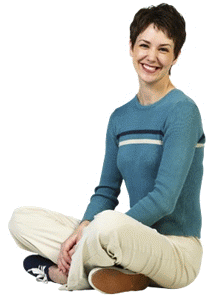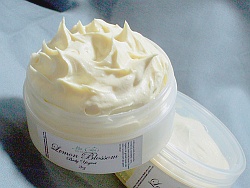
Urinary Incontinence – how to deal with it?**
Urinary Incontinence is a common problem, affecting women and men of all ages, even teenagers. It has devastating effects on social, professional and family life. Without the confidence of being dry through the day or night, the threat of embarrassing accidents causes stress and discomfort. There are many reasons for the loss of bladder control and fortunately there are more and more options to treat them. However until the problem is finally solved, you need to protect yourself, so you have the confidence to live normal. The best product for you will depend on the amount and frequency of your urine loss, so the first step is to rate your incontinence.
Typically, these are the following graduations:
Stress incontinence: This is when activities like coughing, laughing, lifting or exercising cause you to leak urine. The amount is usually not much, but enough to wet your pants.
Urge incontinence: This is when you have a sudden urge to dash to the toilet. If you don’t get there in time, you end up wetting yourself. A considerable amount of urine is released suddenly.
Bed Wetting: Not only kids have bed wetting problems – a lot of adults are affected too. To avoid having to always wash the bed linen, just use the right protection at night. A typical bladder holds around 350 to 400ml. In the worst cases a bladder may release twice in the night.
What a re-usable incontinence product should do:
- If worn by day – not be visible, hold as much liquid as necessary and must be leak proof.
Furthermore it should be easy to be changed when wet. - If worn by night – offer maximum protection, be comfortable and easy to use.
- Be easily washed and dried.
The IncoCare product range provides the best protection for every situation and while being environmentally friendly and cost-saving compared with disposables.
Product selector
| Stress or Mild Incontinence: VvSkyVvys or Day Care light | |
| Urge Incontinence: Day Care medium | |
| Bed Wetting: Night Care (medium or heavy) |
*we always recommend visiting your GP or a continence specialist to find the cause of your problems
Choosing the right size
Please be sure to measure yourself before ordering. For hygiene reasons, most products cannot be returned. Each product has a size guide. You may find you need different sizes from different suppliers.
The most important point is the leg cut-out - if it's too tight it's uncomfortable to wear, if it's too big it might leak. So please make the leg cut-out your first priority, with waist size second.
Skin Care

Prolonged contact with urine can cause skin problems around the buttocks, hips, genitals, and the area between the pelvis and rectum (perineum).
Excess moisture in these areas increases the likelihood of redness, peeling, irritation, and yeast infections.
Using diapers and other products may actually make skin problems worse. Although they may keep bedding and clothing cleaner, these products tend to keep the urine in constant contact with the skin. Over time, the skin can break down. Special care must be taken to keep the skin clean and dry.
- After urinating clean and dry the area right away.
- Clean the skin with mild, dilute soap and water. Rinse well, and gently pat dry.
Look for soap-free skin cleansers that do not cause dryness or irritation. Be sure to follow the product's instructions. Some of the products do not require rinsing. Some people may have allergies to the fragrances used in these cleansers, which can cause skin irritation.
Moisturizing creams can help keep the skin moist. Avoid products that contain alcohol, which may irritate the skin. If you are receiving radiation therapy, ask your health care provider if it is okay to use any creams or lotions.
Consider using a skin sealant or moisture barrier. Creams or ointments that contain lanolin, or petrolatum form a protective barrier on the skin. Some skin care products (often in the form of a spray or a towelette) can create a clear, protective film over the skin. A doctor or nurse can recommend barrier creams to help protect the skin.
Even if you use these products, you must still clean the skin after each episode of incontinence. Reapply the cream or ointment after cleaning and drying the skin.
People who often have incontinence problems may develop a yeast infection on the skin. An itchy, red, pimple-like rash appears. The skin may feel raw. There are several products (both over-the-counter and prescription) that can be used to treat a yeast infection.
- If the skin is moist most of the time, you may use a powder with anti fungal medication (such as nystatin powder).
- A moisture barrier or skin sealant may be applied over the powder.
- If severe skin irritation develops, see your health care provider.
Product Care
Reusable Diapers - before use
Wash your new insert diaper or training pants first before you use them. Your diapers won’t absorb properly unless they’ve been washed and dried before use. Most clothing, including diapers, are coated with sizing which facilities handling and protects the garment during the manufacturing process. This coating will reduce absorbency unless first removed during the wash cycle. If you put a brand new diaper on and wet it, urine may simply bead up and run right out of the diaper.
The washing swells and fluffs the cotton fibers, maximizing their absorbency.
Our Recommended Washing Method
- Fasten velcros (if there are any), to prevent damaging the fabric.
- Please rinse with cold water after usage to prevent stains.
- Use 1/4 cup is the recommended amount of detergent.
- Washing at low temperature (40 °C) recommended. However our products can be washed up to 95°C. Please do not use softener or bleach.
- Extra rinse if necessary to make sure that all detergent is rinsed out.
- Can be dried in the tumbler at medium temperature or direct sun light, which will help sterilise as well.
Protection pants: extending their life
With waterproof plastic or PU pants the key to extended life is rinsing them as soon as practical after each use. This is especially true if you use lotions or oils as both can cause vinyl to stiffen and eventually crack. Even if you don’t use lotions or oils, both urine and fecal matter are highly acidic so prompt rinsing after use is strongly recommend.
Eliminating Stains
Often stains can be almost completely eliminated if the plastic pant is thoroughly rinsed right away after soiling. If the pant remains soiled for an extended period of time the stain will set and becomes virtually impossible to remove.
Soap & Detergent
Please note we said rinse, not wash. This is because soaps and detergents can remove or leech-out plasticises in the material that help keep the pant soft and pliable. Of course occasionally it is necessary and desirable to wash them with a mild soap.
Fill a sink with fairly warm water that’s not too hot for you to put your hand in without discomfort. Add a few of drops of very mild liquid soap and gently hand wash. Then drain the basin, refill with clean water and rinse thoroughly.
Air dry only - no sun
Never, ever place plastic or vinyl pants in the dryer. If you are washing a single pair of pants they can be placed on the shower head to drip dry. We suggest passing the shower head through a leg hole, letting the crotch rest on the pipe. If you don’t have a shower or need to dry several pairs of pants you can place them on wire hangers to dry. You may need to bend or reshape the hanger. Sunlight is great for diapers but can be harmful to plastic pants so be sure to keep them out of direct sunlight. To speed up drying, pat them dry inside and out with a towel before hanging.
